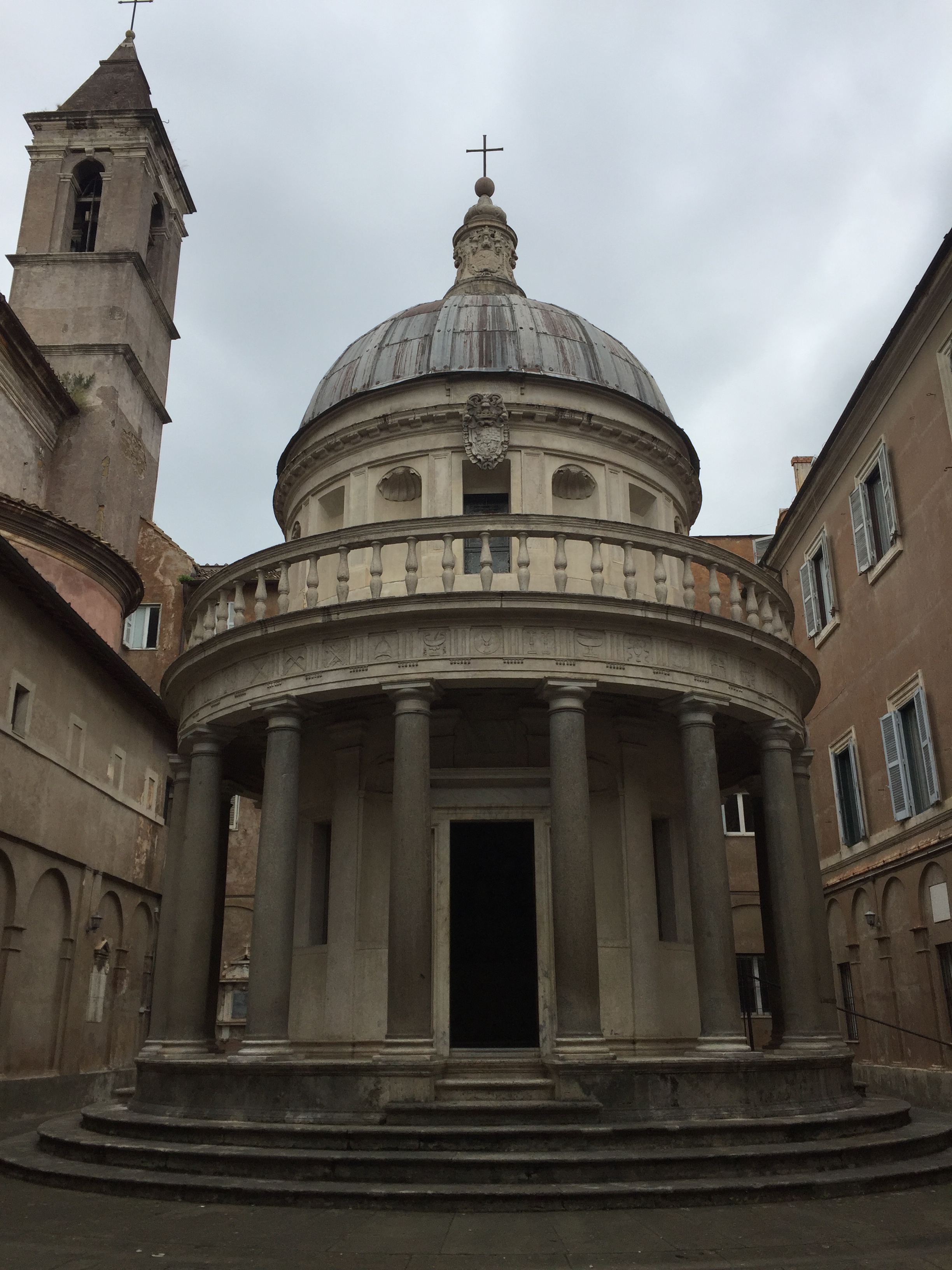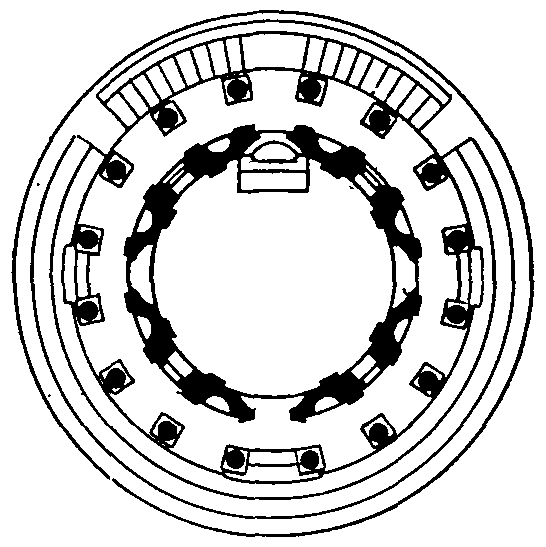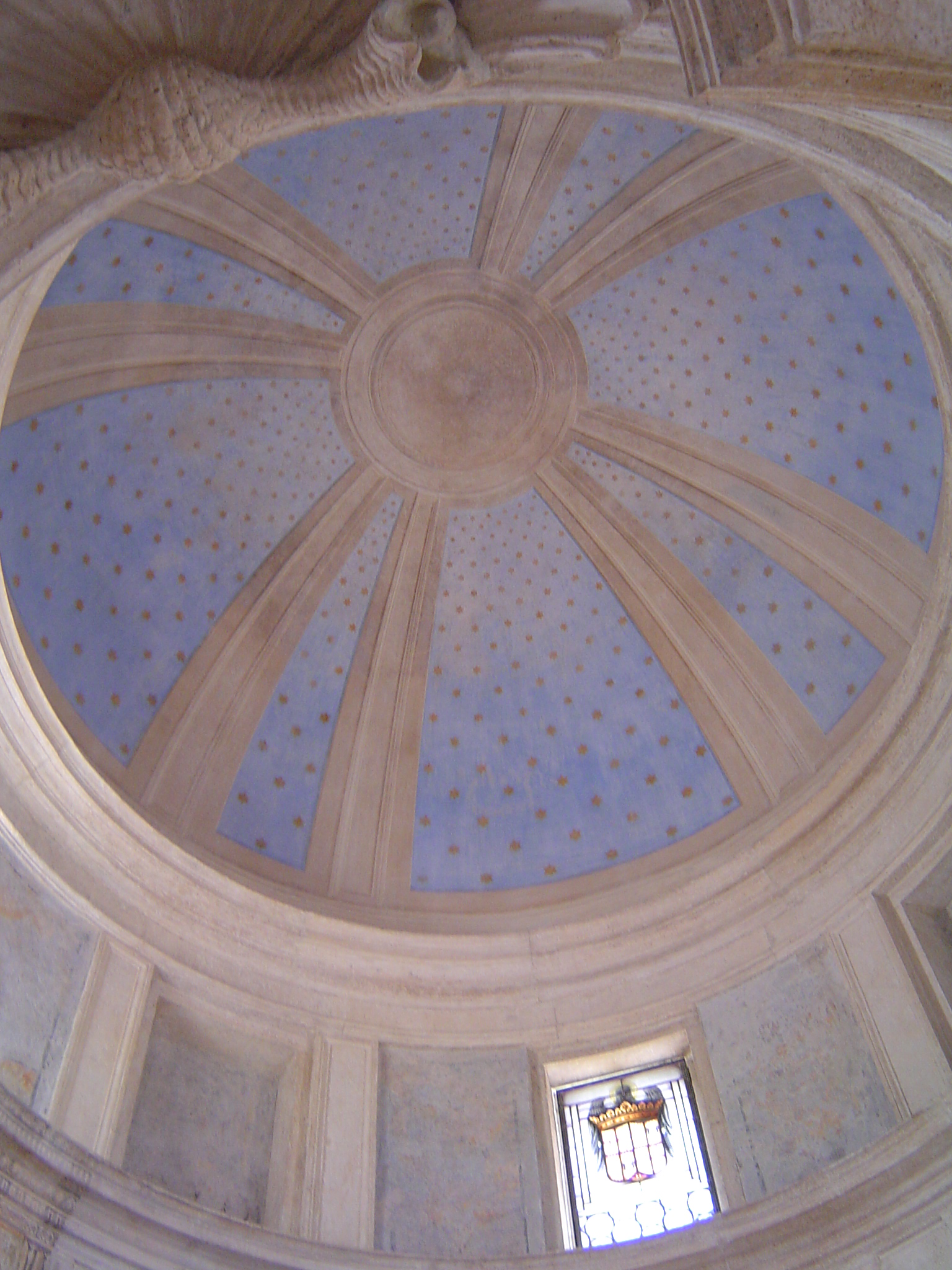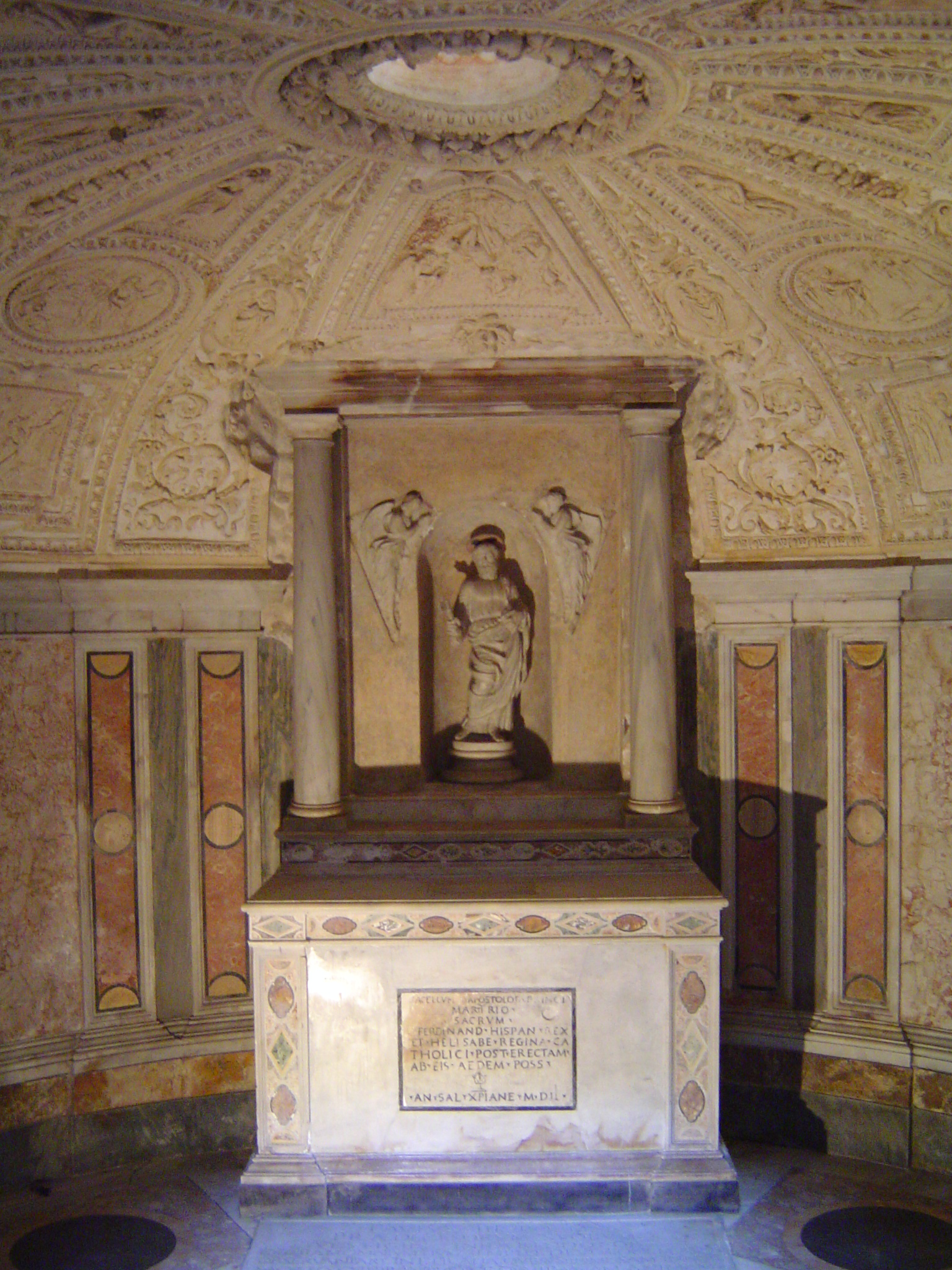Tempietto, BRAMANTE, Renaissance, ROME, Italy, 1502 AD
Often considered one of the earliest buildings of the RENAISSANCE, the Tempietto defines a specific location important in Christianity. Located on the west side of the Tiber River in Rome, the building is small in scale situated in a COURTYARD of the San Pietro in Montorio building. Bramante designed a clear figural object within the figural voided courtyard (image 1). Bramante also designed the courtyard with a circular COLONNADE further reiterating center. In addition, the edges of the courtyard would be circular as well. All of these concentric circles are reinforcing a centrality of the object within the courtyard. The Tempietto is one example demonstrating how designers aren’t always able to build their ideal design.

Image 1: Tempietto in courtyard
As a whole, the project is a series of PLATONIC SOLIDS. An interior cylinder is nested within a cylinder of columns and capped with a dome (a half sphere). The cylinders are resting upon a series of flat cylinders composing the steps of the building. The project is emphasized vertically, particularly within the small courtyard it is positioned reinforcing a central organization and point.
Today there is one public entrance to the courtyard. Entering the courtyard, the centrality is clearly focusing on Bramante’s design. In plan, it is a circular building within the square courtyard (image 2). Though it does not have two separate centers, one can understand a clear lineage from the VITRUVIAN MAN parti of an object within a circle and square. The front door is clearly presented to enter the space. After ascending a few steps and passing the threshold of the circular colonnade, the interior is a small double height space. The interior is one cylindrical room, capped with a celestially painted dome ceiling and a small hole in the center of the floor (image 3). This small room at ground level is not the most important space. Instead as one continues walking to the rear of the project, there is a stair descending under the ground plan. Below the main room at ground level there is another room below (image 4). The hole in the middle of the floor at ground level makes a direct connection to what is happening below.

Image 2: Plan drawing of the Tempietto

Image 3: Interior ceiling of Tempietto painted celestially

Image 4: Lower room below main level of Tempietto with direct connection above
While not indisputably proven, the importance of the Tempietto is marking the place believed to be where St. Peter was crucified. It is a different site from the location where St. Peter was believed to be buried, located at St. Peters Basilica in Rome. The underground room is important, burrowing closest to the location of the crucifixion. Today a view through a gate at the lower level shows an altar and illuminated view of the specific location. The view from the main level is directly down through an AXIS MUNDI connecting to the sacred location.
Media Attributions
- Elevation of the Tempietto © shurraycmu is licensed under a CC BY-NC (Attribution NonCommercial) license
- Plan Drawing of Tempietto © Leon Palustre is licensed under a Public Domain license
- Interior of Tempietto Dome © Aimee Moore is licensed under a CC BY-NC (Attribution NonCommercial) license
- Tempietto Interior Detail © Aimee Moore is licensed under a CC BY-NC (Attribution NonCommercial) license
The rebirth of architecture, art, mathematics, literature, science and rational thinking inspirited from the Classical Greece and Roman eras. Renaissance comes from the Italian word renacare, meaning rebirth.
Figural void encompassed within one building only (as compared to a piazza, a figural void in an urban location lined by multiple buildings). Courtyards can be completely closed within one building or open on one or more sides.
a series of columns, either in a straight line or another form, spanned by lintels
simplified three dimensional shapes extruded from basic shapes such as the circle or square
Inscription of a human figure within a circle and square. Arms and legs outstretched radial to the circle, perpendicularly to the square and implying two centers, navel and groin respectively.
a Z axis (in the third dimension) connecting the heavens to the earth, often related to a religious or spiritual connection, though there are exceptions
